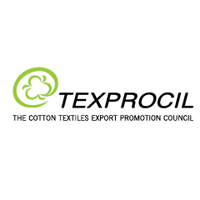 The new Drawback rates, as announced by the government recently, are positive and growth oriented. Overall the rates for cotton textiles and the Drawback caps have been increased”, chairman of the Cotton Textiles Export Promotion Council (TEXPROCIL), Mr. R.K. Dalmia said.
The new Drawback rates, as announced by the government recently, are positive and growth oriented. Overall the rates for cotton textiles and the Drawback caps have been increased”, chairman of the Cotton Textiles Export Promotion Council (TEXPROCIL), Mr. R.K. Dalmia said.
The new Drawback schedule, effective from November 22, has incorporated the additional categories of products such as flame retardant fabrics, cotton yarns below counts 50 and above counts 50, cotton lycra yarn as requested by TEXPROCIL, based on their increasing international demand.
Mr. Dalmia complimented the department for recognizing the growing importance of lycra based yarns/fabrics which constitute about 25% of the World trade in textiles. However, the rates for lycra based products should have been increased by at least 1% and not 0.1% in order to offset the high import duty on lycra. TEXPROCIL will be submitting revised calculation in this regard for further increase in the Drawback rates and caps for lycra based products and hopes for a sympathetic consideration.
The Notification announcing the Drawback rates has also mentioned that “There is a need for continued scrutiny for preventing any excess drawback arising from mismatch of declarations made in the item details and the drawback details on the shipping bills. Mr. Dalmia urged that this clause should be used judiciously by the customs department to avoid unnecessary harassment and inconvenience to the exporters operating under the Drawback scheme.
Reiterating the Council’s consistent demand for higher Drawback Rates and Drawback caps and export benefits under the Foreign Trade Policy, Mr. Dalmia pointed out that according to the latest report of the Labour Bureau in the ministry of labour and employment, the textiles sector being the most labour – intensive one and second largest employer after agriculture has added 190000 jobs in 2013-14 contributing to about 70% of all hiring. The sector can contribute hugely towards promoting inclusive growth, developing Tier 2 cities and fulfilling the goal of “Make in India” as envisaged by the new government under the dynamic leadership of Mr. Narendra Modi.













